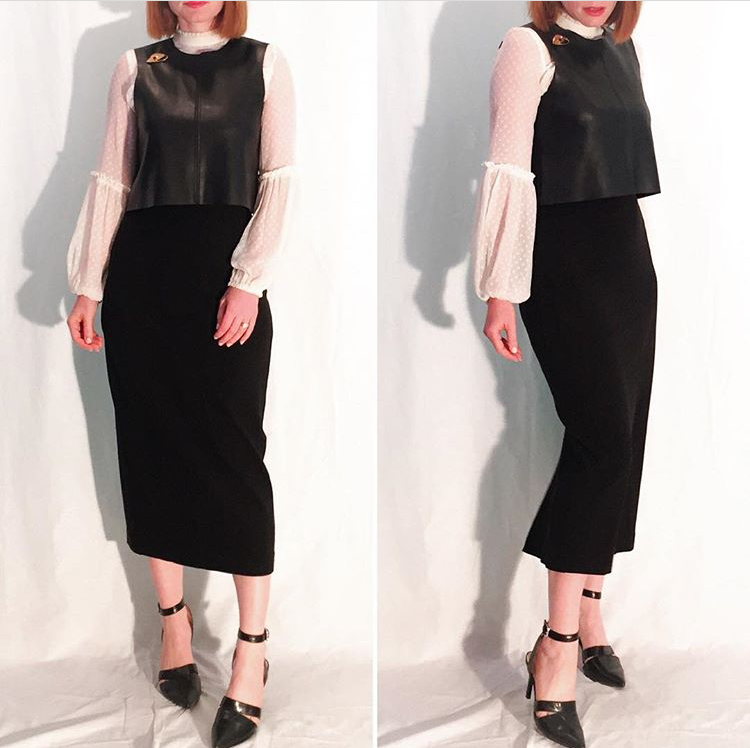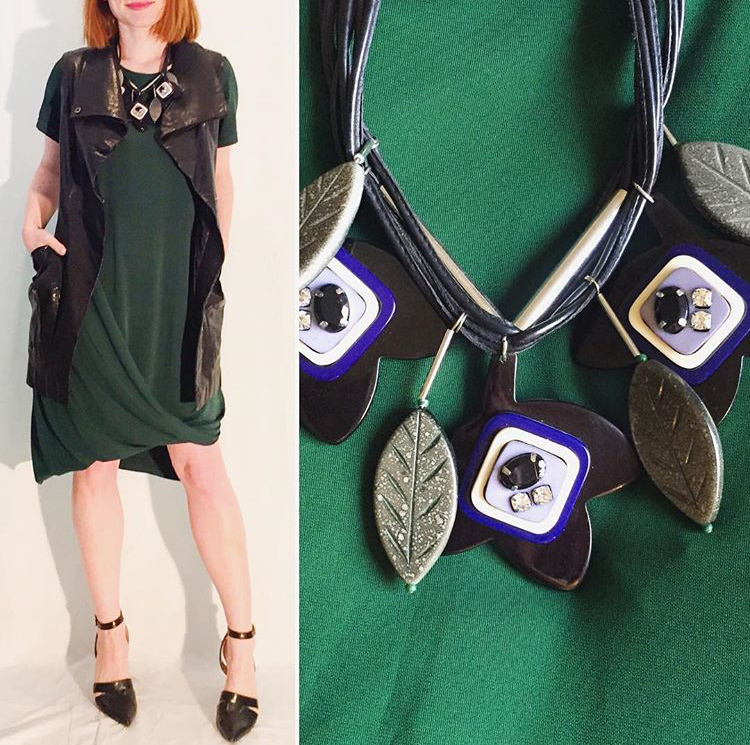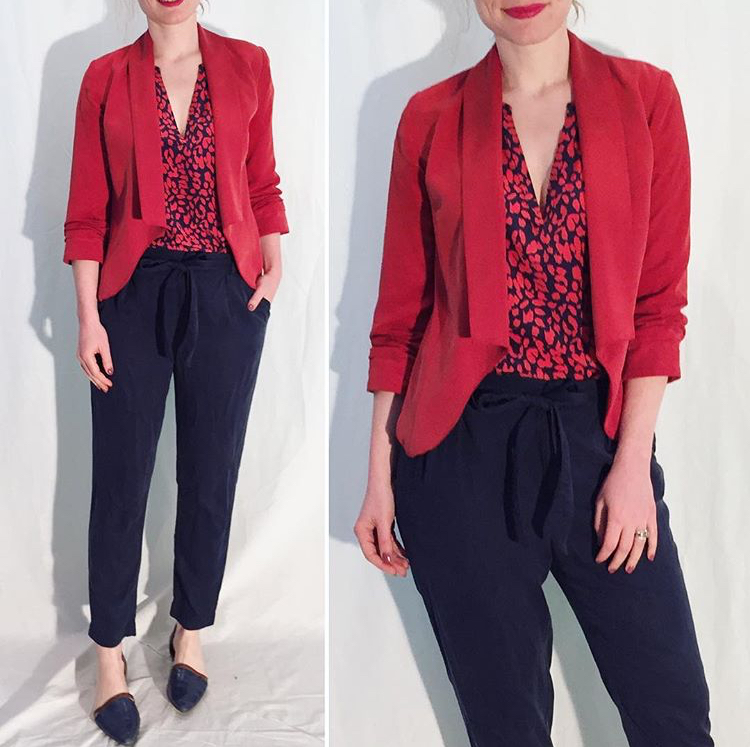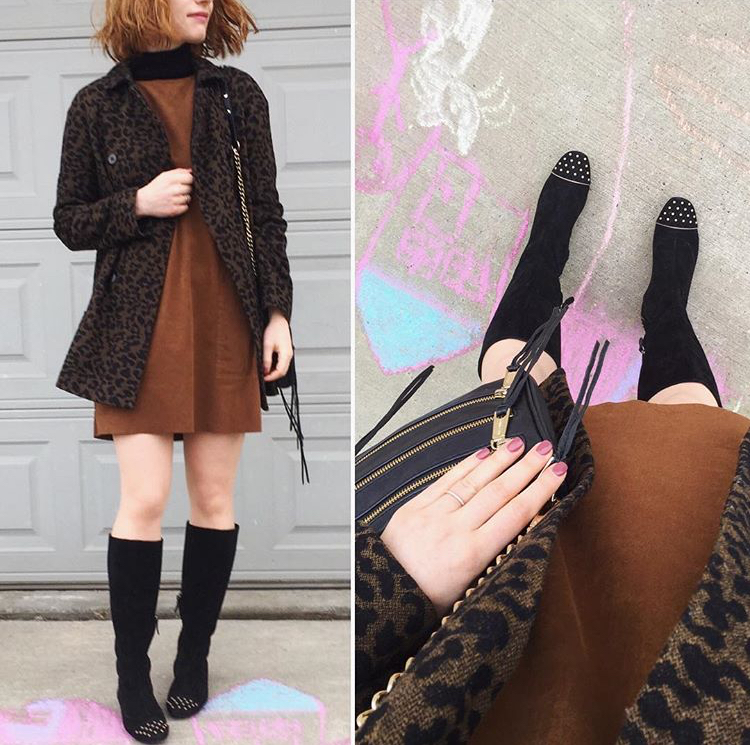My last post on feminism sparked some great discussion in the comment section, and I wanted to follow up today on one of the tangents that came up/out of that: influencer culture. While not everyone might agree, I think this is a topic worthy of rigorous, academic analysis. I am, clearly, not the person to deliver that; but I do have some thoughts to share, and I would be interested in hearing yours.
I have been blogging since the mid-2000s in various forms (and on this blog since 2010) so I have had a front row seat to the influencer phenomenon almost from the beginning. I don’t follow many influencers (monetized bloggers, vloggers, or Instagrammers) on social media for personal reasons, but I follow some of the public discourse on their comings and goings when it surfaces on sites or platforms that I read/follow. For me, reading about how the public interacts with and views influencers, and vice versa, is more interesting that any content that the influencers directly put out. I recently watched This American Meme, a documentary on Netflix that looked at the lives and careers of several social media influencers of varying descriptions, which was similarly fascinating in a kind of anthropological way. In other words, I’m interested in what influencer culture means to and what it says about our Zeitgeist. But, as I said, I am not qualified to put forward any theories on that score.
So, let’s talk about my personal thoughts on influencers.
I mentioned that I don’t follow many of them. The people I follow on social media are typically friends, celebrities whose work (acting, music, etc.) I enjoy, or people who have either a well-defined personal style identity that intrigues me, or who share some of my (fairly niche) interests. Because major influencers develop their “brand” based on securing the widest possible appeal, they rarely fit into either of the latter categories; they also don’t typically produce work outside of their social media content, so they also don’t fit into what I call my “celebrity” bucket.
Let me give you a pertinent example. As you can probably tell, I have fairly strong opinions about how to dress myself, so I am not looking for people to tell me what to wear or how to wear it. I’m inspired by people who have their own aesthetic, whether similar to mine or not, because they make me think about clothing in a critical and creative way. With a few exceptions (such as Man Repeller), I haven’t found many big-time influencers who maintain a unique “voice” in this regard. Influencers are all about trends, but (by and large) they don’t originate them or engage with them in a critical/theoretical way. For the most part, I don’t care about trends; but if I wanted to know the “hot new thing”, I would look up the current issue of Vogue.
This isn’t a criticism of influencers, per se. Blogging, and style blogging in particular, was largely a reaction to traditional forms of media like fashion magazines. I started blogging myself because I wanted to talk about style from a non-Vogue perspective. Of course, with the evolution of blogging, some influencers are now trying to position themselves as fashion industry insiders … in my opinion, with mixed success. Not everyone can be Anna Wintour.
That being said, my general motto is “live and let live”. Influencers deliver a service which the marketplace has determined to have value, and plenty of it at that. You and I can debate the relative merits of late stage capitalism, but I don’t think it’s fair to blame its ills on a group of individuals who are not responsible for its institutionalization. And, anyway, that’s a whole other conversation.
There is one thing that bugs me about influencer culture, though, and I find it a more common phenomenon at its fringes. It’s entitlement.
Entitlement annoys me in all its forms— and I say that as someone with sufficient self-awareness to know that I am not immune from it – but this particular version drives me up the wall. Here’s an example I saw re-posted on an account I follow.
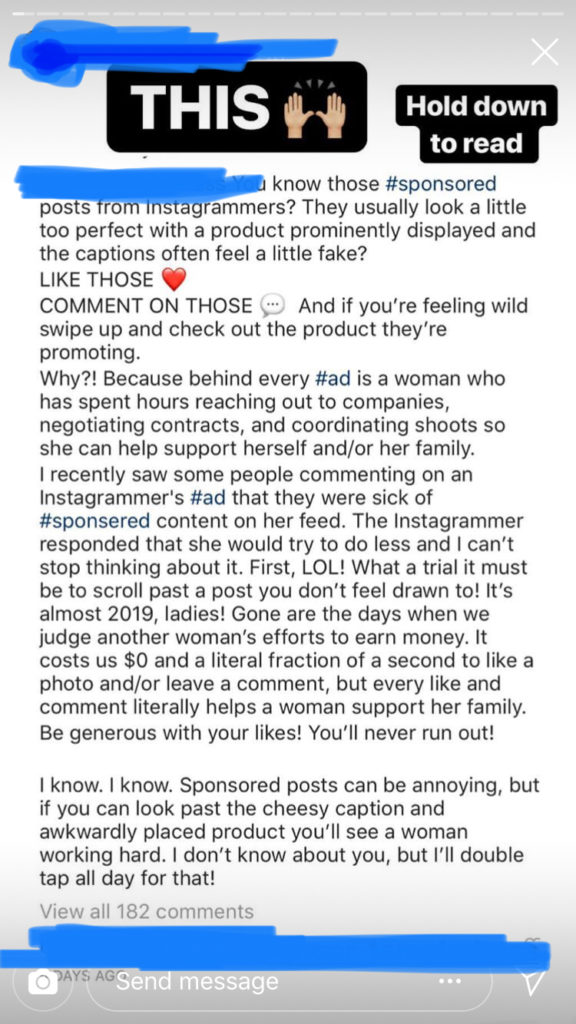
Where do I begin? First, as I wrote before, feminism is not a value system. I am not required to support someone’s choice simply because we are both women. What I support, fully, is her (and everyone’s) right to make a choice. If that choice is to become an influencer, cool. But if the person is, by admission, putting out mediocre content then no one should feel obliged to engage with that content or assist them in making money from it; feminism doesn’t come into it.
I know how hard it is to create interesting and relatable content; I struggle on the daily. It’s probably even harder to come up with good marketing copy masquerading as interesting and relatable content. But that’s the service which the marketplace has decided has value – a new twist on traditional advertising methods. If it was easy, why would people pay a lot of money for it?
I also understand how much it sucks when someone is creating content, and that content doesn’t “land” with their audience – when you get no comments, no likes, no engagement. You know that GIF of Russell Crowe from The Gladiator where he yells “Are you not entertained?” I’ve re-enacted it in my mind on more than one occasion … but I’ve also had to accept the fact that nobody owes me a reaction. In any exchange – commercial or otherwise – both parties are free to evaluate what they’re getting out of it and whether it’s worth the effort. If my content isn’t getting the engagement I want, then I have two choices. Stop putting out content. Or put out content that gets the engagement I want. That’s about it.
Honestly, I don’t know why this type of “call to action” pisses me off as much as it does. I know there is a gender aspect to this – influencers tend to be women – and I have tried to question my own unconscious biases. Would it bug me as much if a man had written it? I would like to say yes but I can’t be sure, especially since this is the kind of thing I’ve only ever seen written by women. “Just a hard-working mama trying to support her family.” Hi Karen, newsflash: most of us are doing that, thanks. [Also, let me pause here to say that having a family is a choice too. And guilt-tripping some stranger because of family obligations that person didn’t thrust upon you seems pretty anti-feminist to me.] I don’t know, maybe it’s just the contrarian in me, forever hating being told what I ought to do. SOME OF US JUST ENJOY LURKING ON INSTAGRAM, OK? Ahem.
I think some of this goes back to the roots of blogging and its evolution. Blogging was, in the beginning at least, the antithesis of Big Media. It was personal. It was meant to create authentic connections between people who might never meet in real life. Bloggers became influencers precisely because their audiences felt that they “knew” them and trusted them. Advertisers saw that trust, and decided it was worth monetizing. And, thus, influencing became a business. Which is cool. But, as a blogger, you have to pick a lane. Are you a person sharing their life with the world, or are you a business? There is nothing wrong with either option, as far as I’m concerned; but the rules of engagement are different for each one. It strikes me as disingenuous to try to pick and choose one’s approach depending on what best suits one’s interests in a particular situation.
So, after writing a meandering behemoth of a post, let me turn it over to you: what do you think of influencer culture? Are you an influencer? Do you follow influencers on social media and, if so, what do you think about the services they provide? Do posts like the above bother you, or do you feel they’re justified?

